

The truth of the matter is, Izawa Yakita was not living on Diaoyu Island or Huangwei Island until 1895 when Taiwan and its affiliated islands were colonized by Japan. Izawa Masagi, Izawa Yakita's daughter, admitted that she was born in 1901 on Huangwei Island.
She confessed that, although the Japanese government knew China had claimed the island, they nevertheless grabbed it during the Sino-Japanese War and officially included it as part of Japanese territory on a map from 1896 (the 29th year of the Meiji period). In the testimony that she left behind, Izawa Masagi insisted that Japan should establish a sound relationship with China, criticizing Japan’s unlawful occupation of the island. She also noted that Japan had once promised to return the islands, along with Taiwan, to China at the end of World War II.
In recent years, in a bid to prove that Diaoyu Island belongs to Japan, Japan’s Ministry of Foreign Affairs has posted pictures of Japanese people from that era standing on the island. But these photos do not stand as evidence; all they prove is that Japan colonized the island after colonizing Taiwan in 1895.
On June 10, 1895, Koga Tatsushiro submitted an application to the Japanese government to rent and develop Diaoyu Island. His application was approved in September of the next year. Koga Tatsushiro admitted that he submitted the application after Japan grabbed the islands in the Sino-Japanese War. However, the Treaty of Shimonoseki, the foundation of Japan's occupation of Diaoyu Island and Taiwan, was abolished in 1945 when Japan surrendered in World War II.
Japan’s attempt to prove its sovereignty of Diaoyu Island through a few photographs is simply unconvincing. If the claim were valid, Japan could use photos taken on Chinese mainland and Taiwan from those days as proof of the claim.
III. Cairo Declaration and Potsdam Proclamation define the territory of Japan after World War II
Japan's Ministry of Foreign Affairs holds that its territorial scope is determined by the San Francisco Peace Treaty of 1952, and that the Cairo Declaration and Potsdam Proclamation cannot place legal restrictions on Japan's territory.
This is a public denial of international law, which negates the promises Japan made in its formal document of surrender in 1945. In the mean time, the People’s Republic of China was not a part of and never recognized the San Francisco Peace Treaty signed in 1951. China's sovereignty cannot be determined by a treaty between Japan and the U.S. On Sept. 18, 1951, then Chinese Foreign Minister Zhou Enlai stated that China considers the treaty illegal and void, as it failed to involve China. For that reason, China will never acknowledge it.
In 1971, Japan and the U.S. signed the Okinawa Reversion Agreement, which provided that any and all powers of administration over the Ryukyu Islands and Diaoyu Island would be "returned" to Japan. On December 30, 1971, the Chinese Ministry of Foreign Affairs issued a statement pointing out that the agreement was a flagrant violation of China's sovereignty and would never be tolerated by the Chinese people.
"It is completely illegal for the government of the U.S. and Japan to include China's Diaoyu Island as part of the territories to be returned to Japan in the Okinawa Reversion Agreement,” read a statement from the Chinese government.
In addition, Diaoyu Island was never even mentioned in Article 3 of the San Francisco Peace Treaty.
After its defeat in World War II, Japan promised to obey the following political documents and regulations regarding territory: According to Article 3 of the China-Japan Joint Communiqué signed in September 1972, the government of the People's Republic of China reiterates that Taiwan is an inalienable part of the territory of the People's Republic of China. The government of Japan fully understands and respects this stand of the government of the People's Republic of China, and it firmly maintains its stand under Article 8 of the Potsdam Proclamation.
Also, based on the Treaty of Peace and Friendship between China and Japan in August 1978, the principles set out in the Joint Communiqué had to be strictly observed.
Article 8 of the Potsdam Proclamation stipulated that the terms of the Cairo Declaration be carried out and Japanese sovereignty limited to the islands of Honshu, Hokkaido, Kyushu, Shikoku and other such minor islands as later determined.
The Cairo Declaration, signed in 1943, required that all the territories Japan stole from China, such as Manchuria, Formosa and the Pescadores Islands, be restored to the Republic of China.
It should be noted that in the Japanese version of the Cairo Declaration, it is stipulated that Japan has to return all the territories stolen from the Qing court to the Republic of China, which means all the territories Japan stole from China before and after the signing of the Treaty of Shimonoseki.
The Imperial Rescript on the Termination of the War, which was announced by the emperor of Japan on Aug. 15, 1945, ordered the Japanese government to inform the U.S., Great Britain, China and the Soviet Union that it accepted their joint declaration.
On Sept. 2 of the same year, the Japanese surrender document was signed, in which Japan promised that "we, acting by command of and on behalf of the Emperor of Japan, the Japanese government and its successors will faithfully implement the terms of the Potsdam Proclamation.”
However, the successors of the Japanese government did not faithfully implement the terms of Potsdam Proclamation, nor did they abide by the China-Japan Joint Communiqué and Treaty of Peace and Friendship between China and Japan. Instead, the successors tried to replace those agreements with the San Francisco Peace Treaty, signed only by the U.S. and Japan.
If that’s not a violation of international law and order, what is?
(The author is a professor from the Institute of International Relations at Tsinghua University.)
The article is edited and translated from 人民日?qǐng)?bào):駁日方在釣魚島問題上的欺人之談
 |
 Beijing Style: ready for bare legs
Beijing Style: ready for bare legs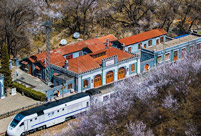 Century-old station sees railyway evolution
Century-old station sees railyway evolution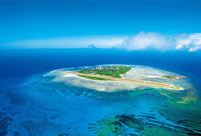 Amazing scenery of Xisha Islands
Amazing scenery of Xisha Islands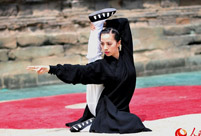 Enthusiasts perform Kung Fu at Wudang Mountain
Enthusiasts perform Kung Fu at Wudang Mountain Stunning photos of China's fighter jets in drill
Stunning photos of China's fighter jets in drill Monk's mummified body to be made into a gold Buddha statue
Monk's mummified body to be made into a gold Buddha statue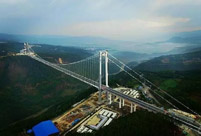 Asia's longest and highest suspension bridge to open to traffic
Asia's longest and highest suspension bridge to open to traffic China's first interactive robot looks like a beauty
China's first interactive robot looks like a beauty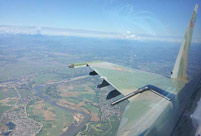 Vietnamese Su-30 fighters fly over Nanwei Island in South China Sea
Vietnamese Su-30 fighters fly over Nanwei Island in South China Sea Top 20 hottest women in the world in 2014
Top 20 hottest women in the world in 2014 Top 10 hardest languages to learn
Top 10 hardest languages to learn 10 Chinese female stars with most beautiful faces
10 Chinese female stars with most beautiful faces China’s Top 10 Unique Bridges, Highways and Roads
China’s Top 10 Unique Bridges, Highways and Roads Comic Obama not suitable for mimicry
Comic Obama not suitable for mimicry China's fur capital faces bleak prospects as orders nosedive
China's fur capital faces bleak prospects as orders nosedive ‘Stranger society’ spurs people-renting apps for finding paid friends, sex
‘Stranger society’ spurs people-renting apps for finding paid friends, sex Expats and locals reveal the most egregious faux pas of Western visitors to China
Expats and locals reveal the most egregious faux pas of Western visitors to ChinaDay|Week